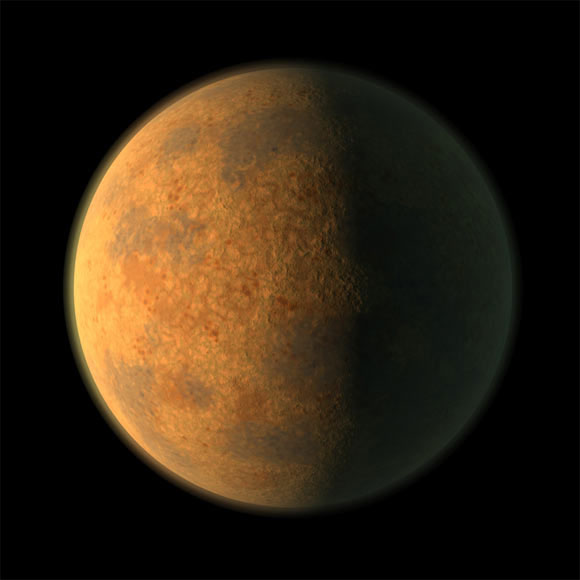Discovered a series of utopian planets with a ground like... eggshells
In the process of searching for models of potentially habitable planets to prepare for future space explorations, the team of scientists realized that the universe could be full of eggshell planets.
According to an international team of scientists led by NASA, rocky planets that are old and far enough away from their parent stars will have lithospheres as hard and dense as Earth's lithosphere, while worlds close to their parent stars and young. could be eggshell planets with lithospheres only a few kilometers thick.

Eggshell Planet - (Graphic image from NASA/JPL-Caltech).
Dr. Paul Bryrne, a planetary geologist with Carolina State University and Washington University in St. Louis (USA), one of the lead members of the study, said that the structure of the lithosphere will help us predict whether it is capable of forming mountains and possessing a dynamic geological process like Earth's. land or not.
So they built a series of planetary models based on known rocky planets and determined the possibility of countless eggshell planets, according to Sci-News.
The eggshell planet will have a shell identical to some of the lowlands on Venus. They may also possess the right conditions for temperature or be in the habitable zone of their parent star, but would be the kind of planet that astronomers should ignore, because the fragile lithosphere would hardly lead to the passage of time. The long-term plate tectonic process cannot help form hills or other complex landforms.
On Earth, it is plate tectonics and other geological activities that help their planet stabilize its atmosphere and climate and stimulate life to multiply and evolve.
Plate tectonics can be understood as the movement of pieces of the Earth's crust. Currently, the globe has at least 15 moving pieces, which once made the world appear supercontinent and then split into many continents like today.
The study has just been published in the Journal of Geophysical Research: Planets
- Video: The benefits of eating eggshells
- Discover more 18 large planets
- Discovered 28 new planets outside the solar system
- A series of monstrous planets with clouds ... aluminum and titanium rain
- Kepler discovered 20 Earth-like planets that could contain life
- Discover more than 700 planets outside the solar system
- Balance the planets in a new way
- Unknown mystery about planets outside the solar system
- Discovered two planets that closely resemble the earth
- Journey more than two decades to explore the outer planet
- Detected more than 362,000 planets
- Detecting the outer three planets about the size of the Earth
 Van Allen's belt and evidence that the Apollo 11 mission to the Moon was myth
Van Allen's belt and evidence that the Apollo 11 mission to the Moon was myth The levels of civilization in the universe (Kardashev scale)
The levels of civilization in the universe (Kardashev scale) Today Mars, the sun and the Earth are aligned
Today Mars, the sun and the Earth are aligned The Amazon owner announced a secret plan to build a space base for thousands of people
The Amazon owner announced a secret plan to build a space base for thousands of people